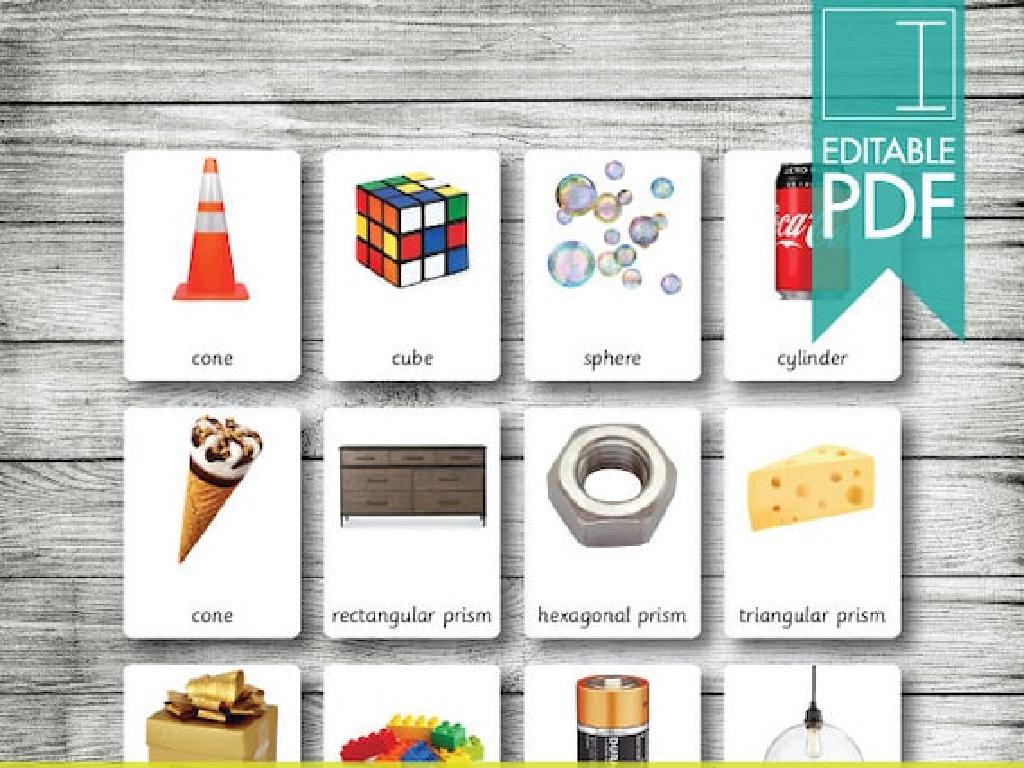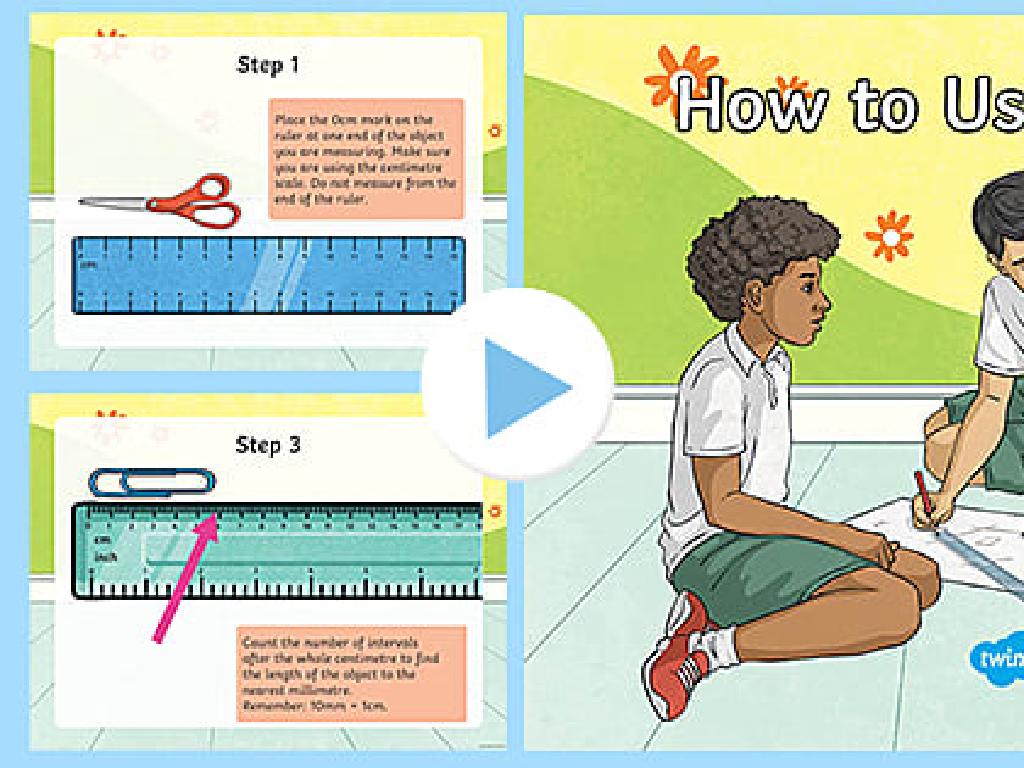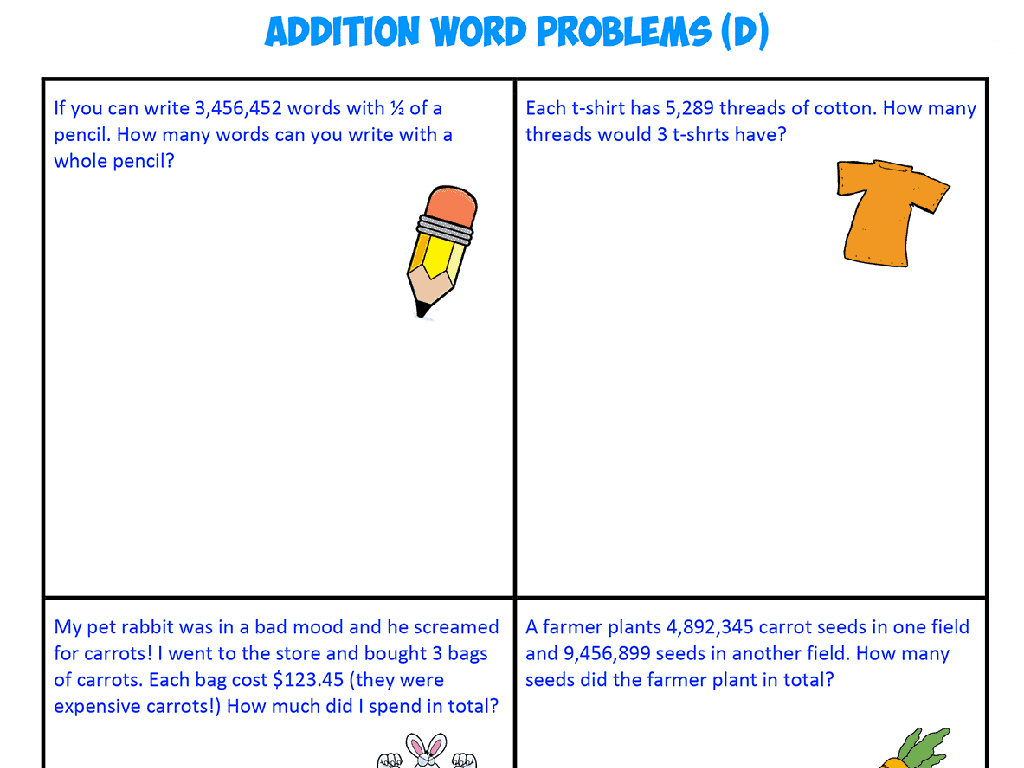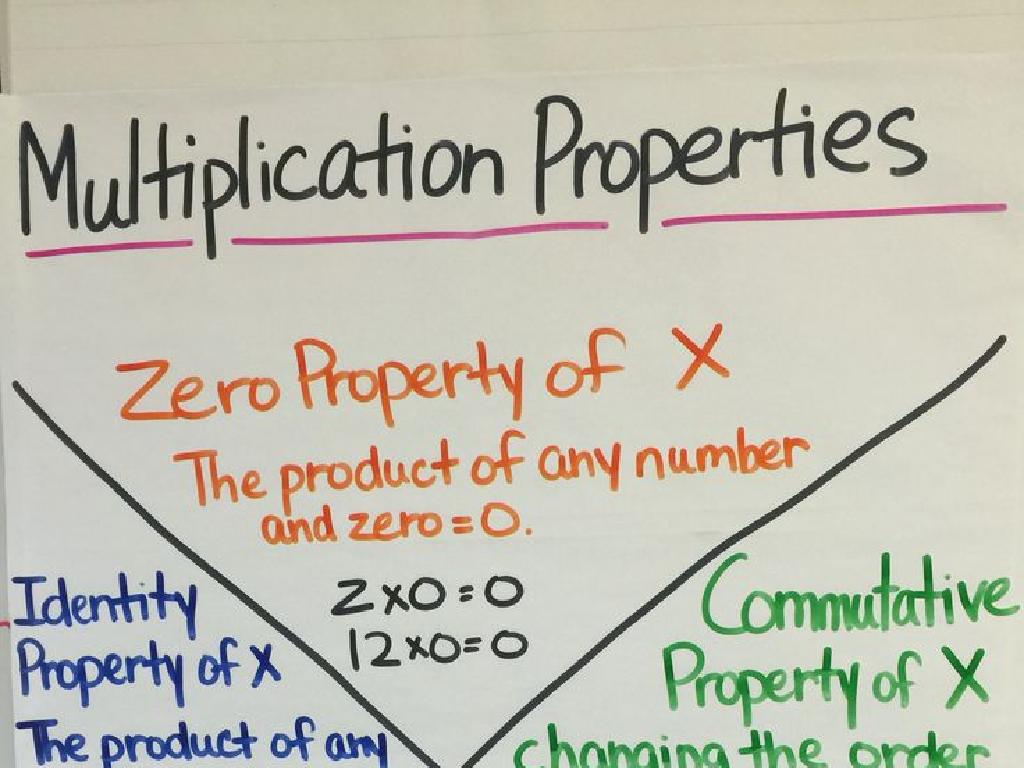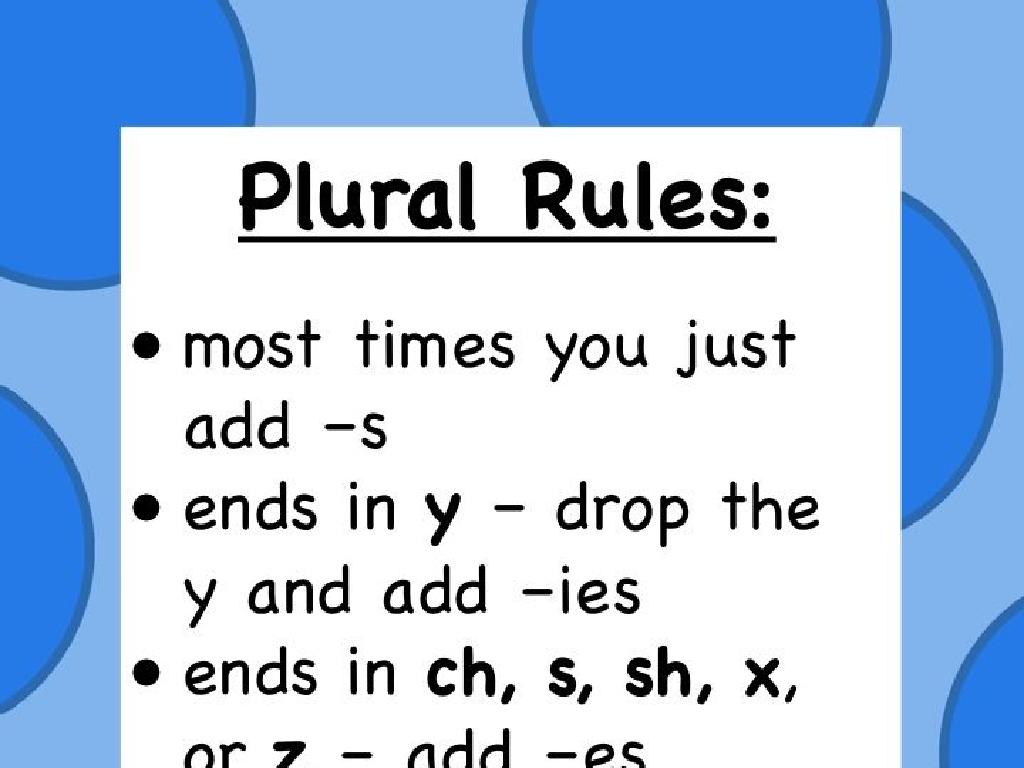Identify Base Words, Prefixes, And Suffixes
Subject: Language arts
Grade: Second grade
Topic: Prefixes And Suffixes
Please LOG IN to download the presentation. Access is available to registered users only.
View More Content
Exploring Word Parts: Prefixes and Suffixes
– What are base words?
– Base words stand alone with meaning, like ‘play’
– Prefixes: Beginnings that change meaning
– Prefixes are added to the start, like ‘re’ in ‘replay’ meaning ‘again’
– Suffixes: Endings that change meaning
– Suffixes are added to the end, like ‘er’ in ‘player’ meaning ‘one who’
– Changing words with prefixes and suffixes
– ‘Unhappy’ means not happy, ‘happiness’ means the state of being happy
|
This slide introduces the concept of prefixes and suffixes to second graders. Begin by explaining that a base word is a word that can stand alone and has meaning. Then, introduce prefixes as word parts added to the beginning of base words to make new words with new meanings. Similarly, suffixes are word parts added to the end of base words. Use simple and familiar examples to illustrate how adding a prefix or suffix can change the meaning of the base word. Encourage students to think of other words they know and discuss how prefixes and suffixes alter their meanings. This foundational understanding will help them decode unfamiliar words and expand their vocabulary.
Exploring Base Words
– What is a base word?
– It’s a word without any prefixes or suffixes
– Base words can stand alone
– They have meaning by themselves
– Examples: ‘play’, ‘happy’, ‘color’
– ‘play’ in playground, ‘happy’ in unhappy, ‘color’ in colorful
|
This slide introduces the concept of base words to second-grade students. A base word is the simplest form of a word that can have meaning on its own, without needing any additions like prefixes or suffixes. Use examples that are familiar to the students, such as ‘play’, ‘happy’, and ‘color’, and show how these base words can be changed by adding prefixes or suffixes to make new words like ‘playground’, ‘unhappy’, or ‘colorful’. Encourage students to think of other base words and how they might be modified with prefixes or suffixes. This will help them understand how words are constructed and how their meanings can change.
Meet the Prefix!
– Prefix: Letters before a base word
– Prefixes change a word’s meaning
– Example: ‘unhappy’ has ‘un-‘
– ‘un-‘ means ‘not’, so ‘unhappy’ means ‘not happy’
– Example: ‘redo’ has ‘re-‘
– ‘re-‘ means ‘again’, so ‘redo’ means ‘do again’
|
This slide introduces the concept of prefixes to second-grade students. A prefix is a set of letters that we add to the start of a base word to change its meaning. For example, adding ‘un-‘ to ‘happy’ changes the meaning to ‘not happy.’ Similarly, ‘re-‘ added to ‘do’ changes the meaning to ‘do again.’ It’s important to show students how the addition of a prefix alters the word’s meaning and to provide them with clear, simple examples. Encourage students to think of other words they know that have prefixes and discuss what the new words mean.
Say Hello to the Suffix!
– What is a suffix?
– A suffix is a letter group added to a word end.
– Suffixes change meanings
– It turns ‘play’ to ‘playing’, meaning the action is happening now.
– Example: ‘playing’
– The suffix ‘-ing’ shows an action is ongoing.
– Example: ‘colorful’
– The suffix ‘-ful’ means ‘full of’, so ‘colorful’ is full of color.
|
This slide introduces the concept of suffixes to second-grade students. A suffix is a set of letters that we add to the end of a base word to change its meaning or turn it into a different word form, such as an adjective or a verb. For example, by adding ‘-ing’ to ‘play’, we change the word from a simple action (play) to an action that is currently in progress (playing). Similarly, adding ‘-ful’ to ‘color’ turns it into ‘colorful’, which describes something that has a lot of colors. Encourage students to think of other words they know and discuss how adding a suffix changes the meaning. This will help them understand how suffixes work and how they can use them to expand their vocabulary.
Prefixes in Action!
– Start with the base word ‘play’
– Add prefix ‘re’ to make ‘replay’
– ‘Re’ means ‘again’, so ‘replay’ means to play again
– Add prefix ‘un’ for ‘unplayable’
– ‘Un’ means ‘not’, making ‘unplayable’ mean cannot be played
– See how prefixes change meanings
|
This slide is aimed at helping second graders understand how adding prefixes to base words can alter their meanings. Begin by explaining what a base word is, using ‘play’ as an example. Then, show how adding ‘re’ to ‘play’ transforms it into ‘replay’, indicating an action that is done again. Similarly, adding ‘un’ to ‘play’ results in ‘unplayable’, which describes something that cannot be played. Encourage students to think of other prefixes and how they might change the meaning of ‘play’. This interactive approach helps students grasp the concept of prefixes and their impact on word meanings.
Suffixes Make a Difference!
– Start with the base word ‘happy’
– Add suffixes for new meanings
– Suffixes like -ness, -ly change a word’s meaning
– Example: ‘happiness’
– ‘happiness’ means the state of being happy
– Example: ‘happy-go-lucky’
– ‘happy-go-lucky’ means carefree and happy
|
This slide aims to teach students how adding suffixes to a base word can change its meaning. Begin with the base word ‘happy’ and show how adding different suffixes like ‘-ness’ and ‘-go-lucky’ transforms the word into ‘happiness’ and ‘happy-go-lucky’, respectively. Explain that ‘happiness’ refers to the state or condition of being happy, which is a noun, while ‘happy-go-lucky’ describes a person’s cheerful and carefree nature, which is an adjective. Encourage students to think of other suffixes and how they might alter the meaning of ‘happy’ or other base words. This will help them understand how words are built and how their meanings can be modified.
Mix and Match: Prefixes and Suffixes
– Prefixes and suffixes modify words
– Example: ‘unhappiness’
– ‘un-‘ means not, ‘-ness’ means state of
– ‘happy’ is the base word
– ‘happy’ changes to ‘unhappiness’
– New meaning with prefix and suffix
– ‘unhappiness’ means the state of not being happy
|
This slide introduces the concept that words can be modified by adding prefixes and suffixes, changing their meanings. Use ‘unhappiness’ as an example to show how ‘un-‘ turns the word into its opposite, and ‘-ness’ turns an adjective into a noun, indicating a state or condition. Explain that the base word ‘happy’ can take on different meanings with the addition of prefixes and suffixes. Encourage students to think of other examples and to understand how the base word’s meaning is transformed. This will help them decode unfamiliar words they encounter in reading.
Class Activity: Word Creators!
– Understand base words
– Learn about prefixes and suffixes
– Prefixes are beginnings like ‘un-‘ or ‘re-‘, and suffixes are endings like ‘-ful’ or ‘-less’.
– Create new words together
– Pick a base word, then add ‘un-‘, ‘re-‘, ‘-ful’, or ‘-less’ to make a new word.
– Share words and meanings
– Tell us your word and what you think it means.
|
This activity is designed to help students understand the concept of base words and how adding prefixes and suffixes can change their meanings. Start by explaining what base words, prefixes, and suffixes are. Provide examples of each and demonstrate how they combine to form new words. Encourage students to be creative and come up with their own words. Possible activities: 1) Have students draw cards with base words and affixes to combine them randomly. 2) Pair students to create words together. 3) Create a word wall where students can post their new words. 4) Have a ‘word parade’ where students present their words. 5) Play a matching game with base words and affixes.
Review and Practice: Base Words and Affixes
– What is a base word?
– A base word has meaning on its own and can stand alone.
– Prefixes and suffixes modify words
– They are word parts added to base words that alter the meaning.
– Find the base word in ‘unbelievable’
– ‘Believe’ is the base word in ‘unbelievable’.
– Practice with more examples
|
This slide is aimed at reviewing the concept of base words, prefixes, and suffixes. Start by explaining that a base word is a word that has meaning by itself and can be used alone. Then, discuss how adding prefixes (beginning) and suffixes (end) can change the meaning of the base word. Use ‘unbelievable’ as an example to show how ‘un-‘ is a prefix that changes the meaning of the base word ‘believe’. Encourage students to identify the base word and discuss how the meaning changes with the class. Provide additional examples for practice, such as ‘redo’, ‘preheat’, ‘happiness’, and ‘careful’, and ask students to identify the base words and affixes.
Let’s Play a Game: ‘Word Detective’
– Find words with prefixes/suffixes
– Circle base word, prefix, suffix
– Base: ‘happy’, Prefix: ‘un-‘, as in ‘unhappy’
– Write down the new words
– Group discussion on meanings
– Share what each word means with friends
|
This interactive activity is designed to help second graders recognize and understand the structure of words by identifying prefixes and suffixes. Encourage the students to look for words in their books that may have a prefix or suffix. They should write these words down and visually separate the base word from the prefix or suffix by circling them. This will help them to see how words can be modified to change their meaning. During the group discussion, facilitate the conversation so that each student has a chance to share and explain the meaning of their new words. This will reinforce their understanding of how prefixes and suffixes alter the meaning of base words and how they can use this knowledge to determine the meaning of unfamiliar words.

